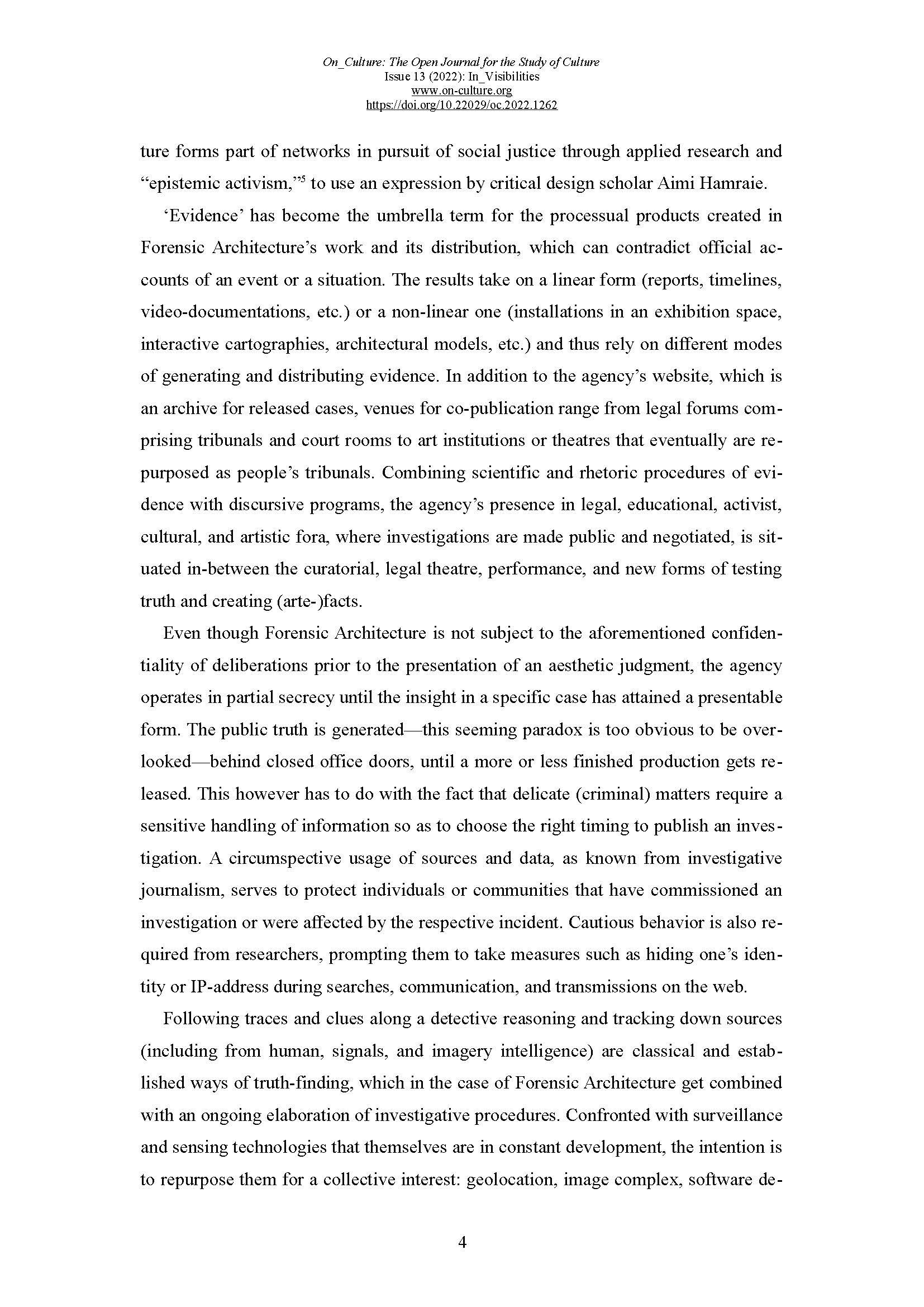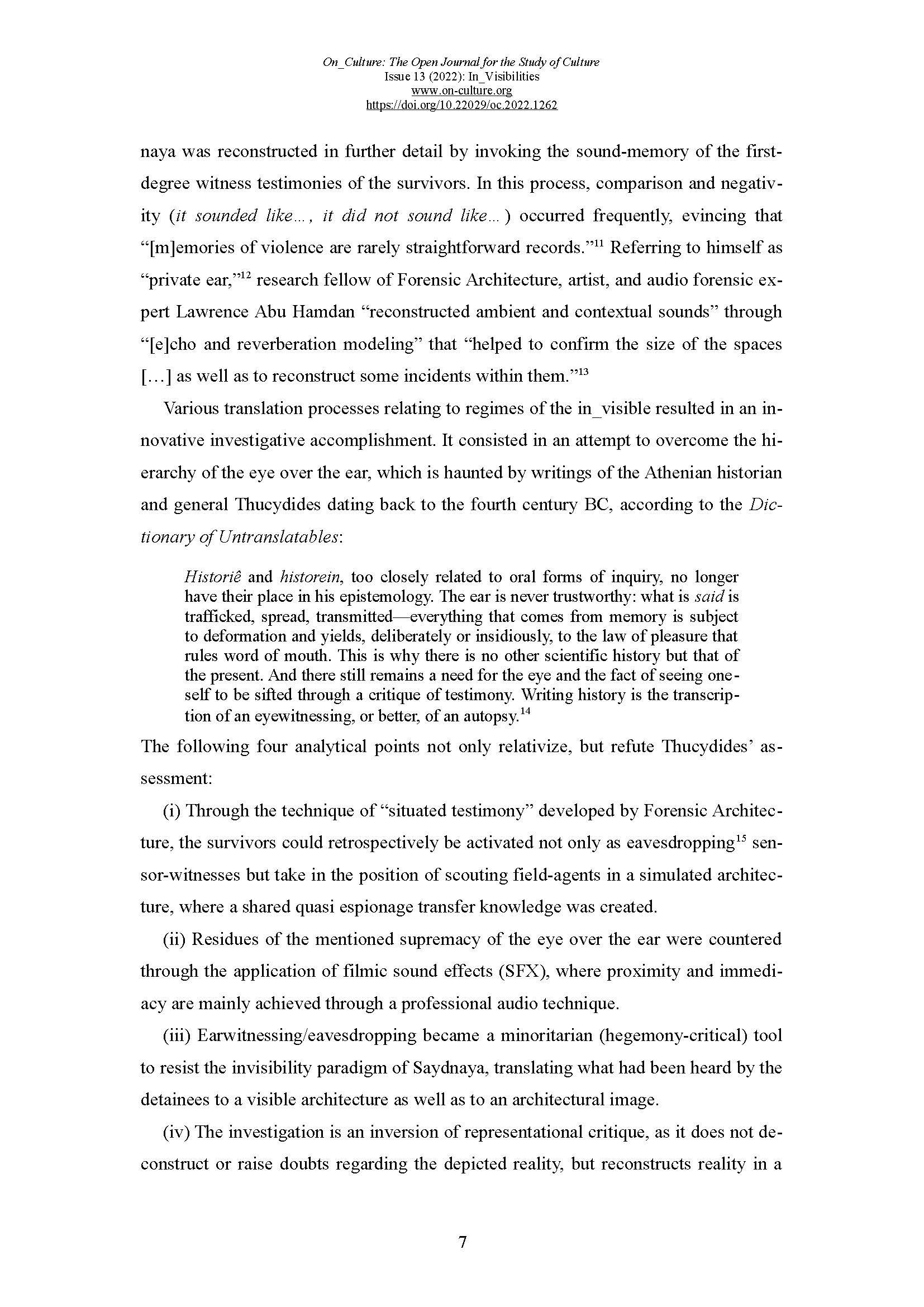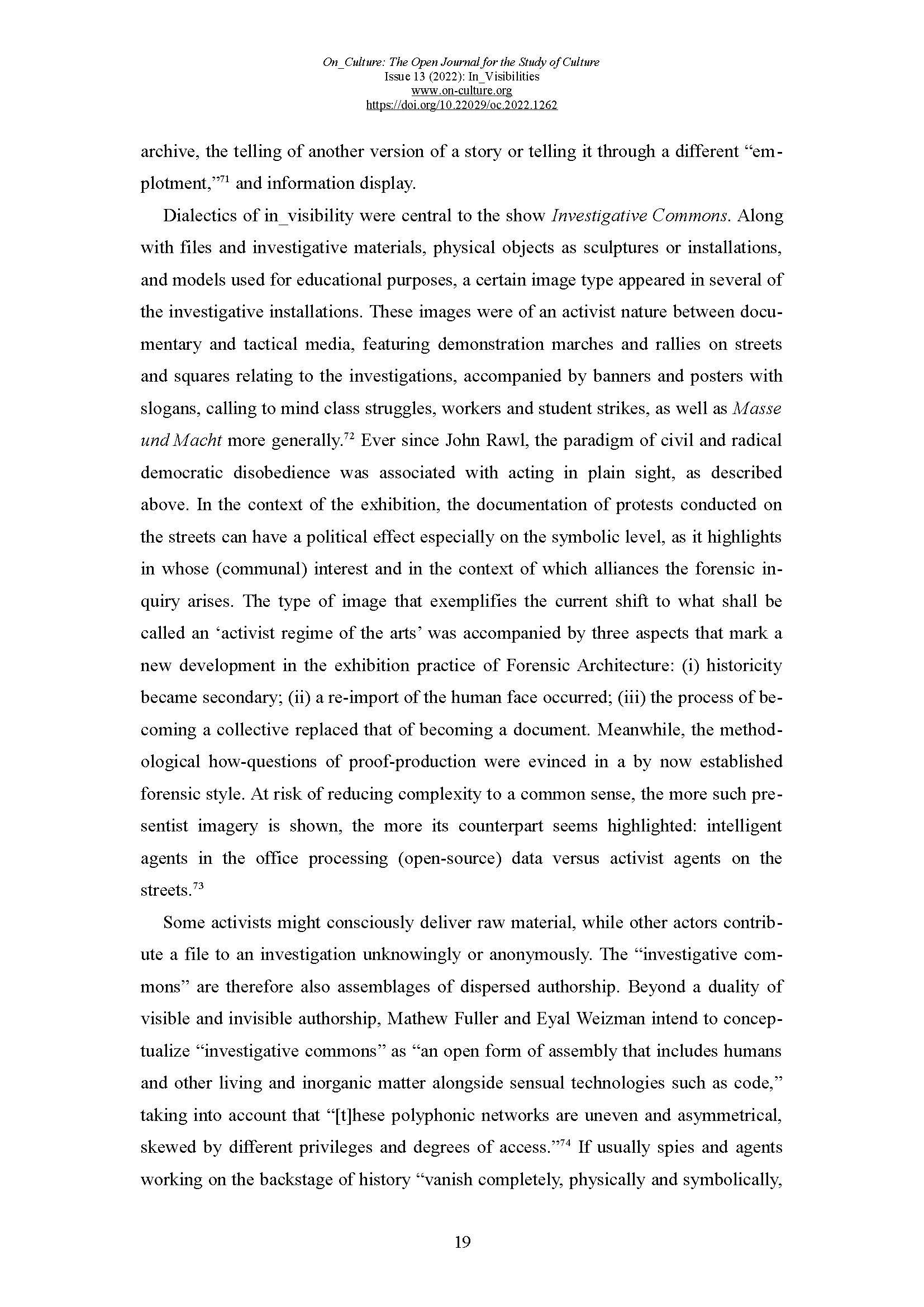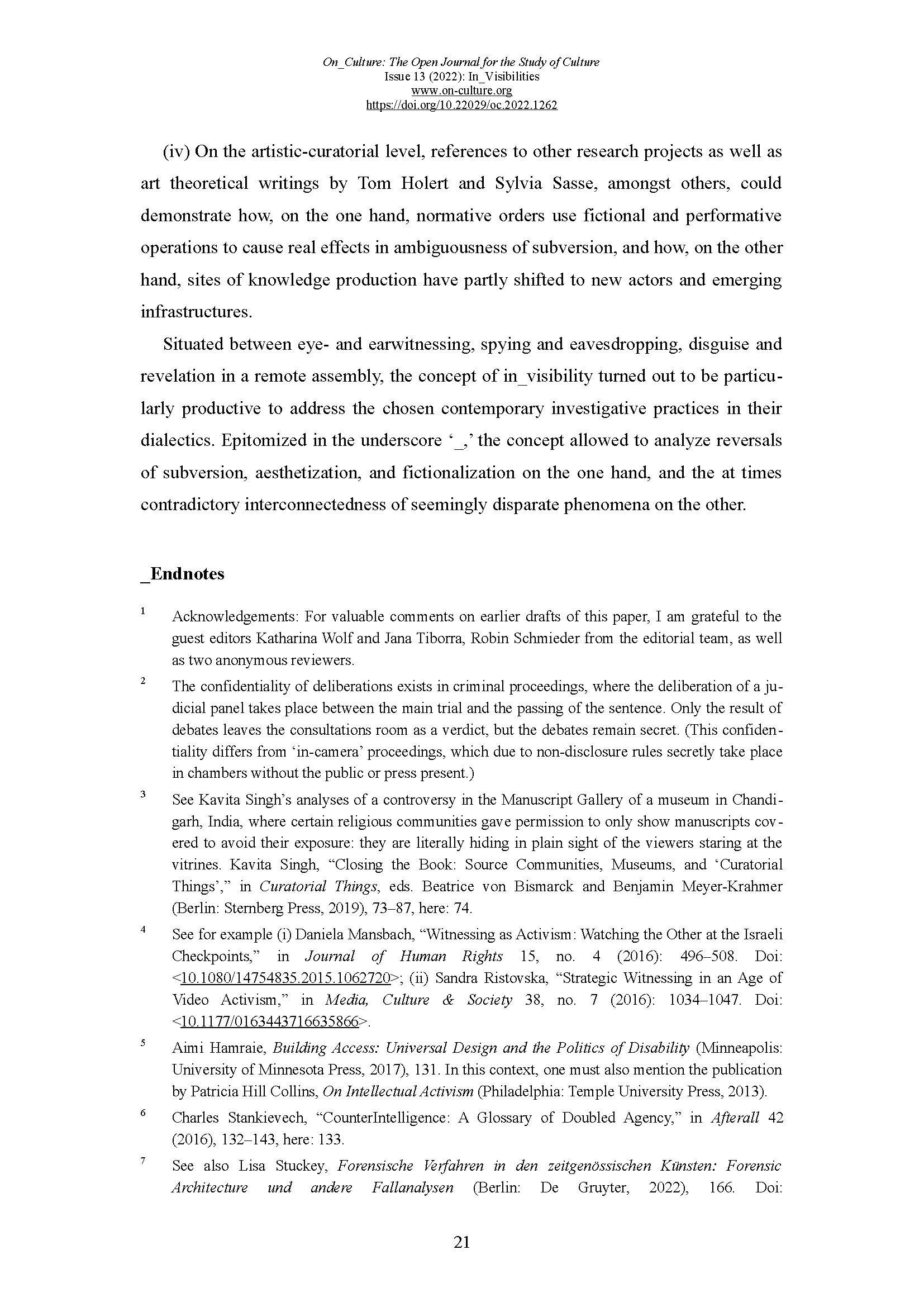Hiding in Plain Sight: Minoritarian Approaches to Espionage, Forensic Architecture, and In_Visible Co-Producers
Peer-reviewed article by Lisa Stuckey, published in: On_Culture: The Open Journal for the Study of Culture, No. 13: “In_Visibilities” (Guest editors: Jana Tiborra and Katharina Wolf).
ABSTRACT. Minoritarian approaches to current manifestations of espionage and hegemony-critical uses of intelligence unsettle both the common distinction in ‘spying’ (as active intentionality) and ‘witnessing’ (as passive incidentality) as well as the association of activism and visibility.
Analyzing investigative practices at the intersections of legal cultures and politicized contemporary arts, the following research question is discussed through the transdisciplinary (Audio-)Visual Culture and Contemporary Art Studies: Which exchange movements and entanglements between contemporary investigative artistic, curatorial, and aesthetic practices on the one hand, and espionage and intelligence on the other, can be discerned, when considered in regards to ambivalences and contradictions of, as well as emancipatory approaches to, in_visibility?
By shedding a spotlight on four investigations by the research agency Forensic Architecture (Torture in Saydnaya Prison, The Beirut Port Explosion, The Murder of Halit Yozgat, and Digital Violence: How the NSO Group Enables State Terror), ‘hiding in plain sight’ serves as a guiding motif to scrutinize in which media-political configurations Forensic Architecture, as a different kind of intelligence agency, and espionage of in_visible co-producers concur in the aftermath of the Cold War and the 1968 movements.

























